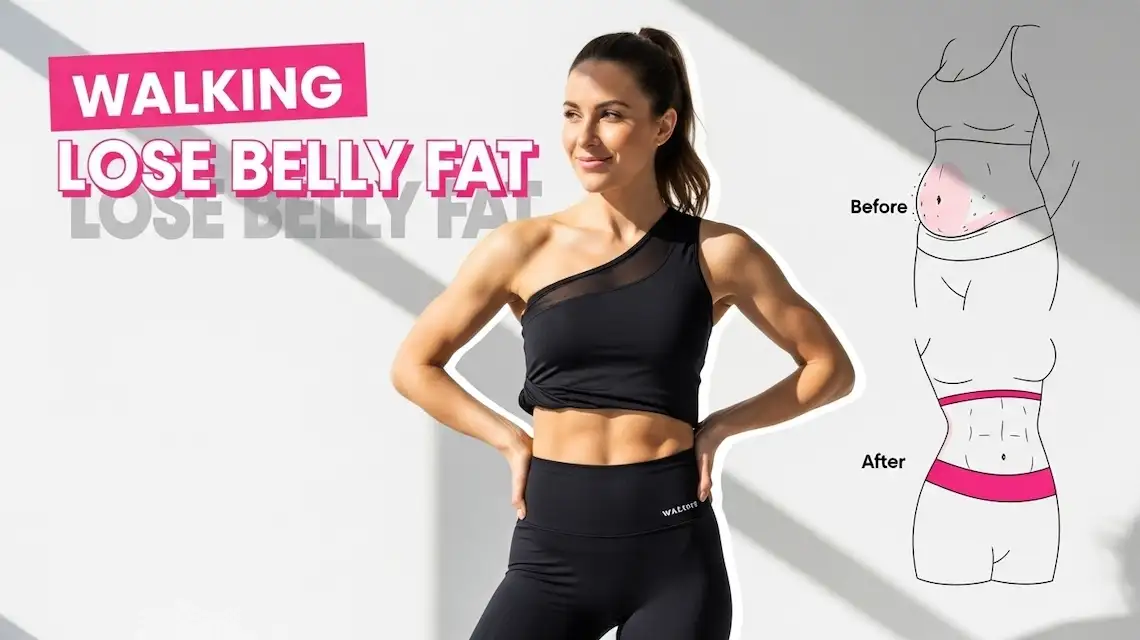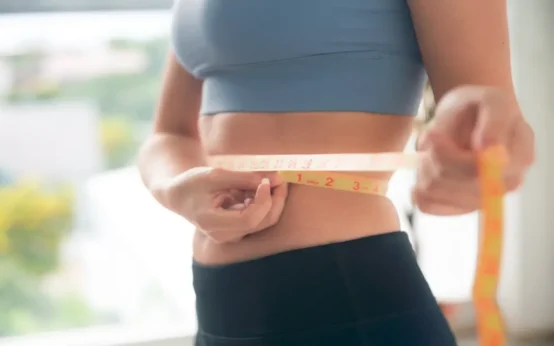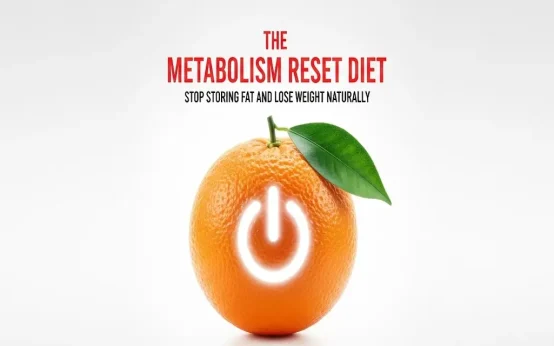Struggling with stubborn belly fat that will not budge? You are not alone. The good news is you do not need a gym or fancy gear to make progress. Walking is simple, low impact, and it can help shrink your waist over time.
Here is why it matters. Regular walks burn calories and improve insulin sensitivity, which helps your body use fat for fuel. A steady walking habit can reduce stress, and lower stress often means less belly fat. You will also boost heart health, sleep better, and lift your mood.
If you are wondering whether walking to reduce belly fat can really work, the answer is yes, if you are consistent and smart about it. Pace, frequency, and total time each week matter more than perfection. Small changes, like a brisk 20 minute walk after meals, add up fast.
This guide will show you exactly how to make walking work for your midsection. You will learn why walking targets the factors behind belly fat, the best routines to see results, and how to adjust pace and duration for your goals. You will get simple tips for form, footwear, and recovery, plus what to eat around your walks. We will also cover common pitfalls that stall progress, and how to avoid them so you can stay on track.
Why Walking Burns Belly Fat Better Than You Think
Walking is steady, repeatable, and friendly on joints. That is why it works for beginners and busy people alike. When you stay consistent, walking to reduce belly fat targets the type of fat that matters most for health, and it does it without leaving you drained.
The Role of Walking in Targeting Visceral Fat
Not all belly fat acts the same. You have two main types:
- Subcutaneous fat: The pinchable layer under the skin.
- Visceral fat: The deeper fat around organs like the liver and intestines.
Visceral fat is more active and releases chemicals that raise blood sugar and inflammation. Walking helps drain this harmful depot because it is an aerobic activity that improves how your body uses oxygen and fat for fuel. When you walk at a brisk pace, your muscles pull fatty acids from the bloodstream. Over time, that reduces the pool of visceral fat near vital organs.
A simple routine works. A 30 minute brisk walk can burn 100 to 200 calories, depending on your pace and body size. Studies show that walking 30 minutes daily can trim waist size and improve insulin sensitivity. Lower insulin helps your body tap fat stores instead of storing more around your middle. Walking also eases stress, which can lower cortisol, a hormone tied to belly fat gain.
Try this for simple progress tracking:
- Diagram idea: Picture two layers around your abdomen. Outer layer is subcutaneous fat, inner ring is visceral fat hugging organs. Your goal is to shrink the inner ring first.
- Measure smart: Track waist at the navel once a week, same time of day. Pair with step counts and average walking minutes.
Everyday example: Add a brisk 10 minute walk after each meal. That is 30 minutes per day, a practical way to chip away at visceral fat.
How Walking Boosts Your Metabolism for Long-Term Fat Loss
Walking builds strength in your calves, hamstrings, glutes, and hips. More muscle raises your resting metabolic rate, so you burn more even while sitting. After a brisk walk, your body uses extra oxygen to recover, known as the afterburn effect. It is modest but real, and it adds up with daily walks.
You can stack more burn by pairing walks with NEAT (non-exercise activity thermogenesis). NEAT is all the movement you do outside workouts, like chores and steps at work.
Easy ways to raise daily burn without formal workouts:
- Stand and move breaks: Set a 5 minute walk break every hour. Sitting burns about 60–80 calories per hour, while easy walking can double that.
- Errand walking: Park farther away, take stairs, carry light groceries in two trips.
- Walking calls: Pace during phone calls. Ten minutes here and there adds hundreds of steps.
- Morning primer: A 10–15 minute walk before breakfast can set the tone for the day.
Think of your day like a budget. Your brisk walk is the big payment. NEAT is the steady drip that keeps the balance moving in your favor. Combine both, and walking to reduce belly fat becomes a habit you can keep for life.
Best Walking Routines to Shed Belly Fat Fast
If you want walking to reduce belly fat, you need a plan. Aim for 150 minutes weekly or about 10,000 steps per day. Start with steady brisk walks, then layer in intervals, hills, and varied terrain. Keep most walks conversational but purposeful. Consistency beats intensity.
Brisk Walking vs. Leisure Strolls: Which Wins for Fat Burning?
A leisurely stroll feels nice, but brisk walking wins for fat burn. Brisk means 3 to 4 mph. You will breathe harder but still speak in short phrases. That lands you in the sweet spot for calorie burn and fat use.
Simple ways to find your brisk pace:
- Use the talk test. Full sentences mean too easy. Gasping means too hard.
- Track cadence. Aim for 100 to 130 steps per minute.
- Watch your heart rate. Target 60 to 75 percent of max for most walks.
Speed tips that help:
- Keep your elbows bent at 90 degrees and swing your arms.
- Take short, quick steps. Think smooth roll from heel to toe.
- Pick routes with mild hills or add a 3 to 5 percent treadmill incline.
Avoid overdoing it. Boost time or steps by no more than 10 percent weekly. If you feel sharp pain, back off. Common red flags include shin splints and sore hips. Rotate shoes, add a rest day when needed, and do light calf and hip stretches after walks.
Quick starter plan for the week:
- Mon, Wed, Fri: 25 to 30 minutes brisk at 3 to 4 mph.
- Tue, Thu: 20 minutes easy, add 5 hill minutes if you can.
- Sat: Nature trail for 30 minutes at a steady pace.
- Sun: Rest or 15 minutes easy recovery.
Track with your phone or watch, and aim for steady progress.
Interval Walking Workouts to Accelerate Belly Fat Loss
Intervals raise your heart rate fast, which boosts calorie burn and fat oxidation during and after your walk. They also keep your mind engaged, so you stick with it.
Try this 30 minute routine:
- Warm up 5 minutes easy.
- Fast 2 minutes at a hard pace, about 8 of 10 effort.
- Moderate 3 minutes, about 6 of 10 effort.
- Repeat steps 2 and 3 four more times.
- Cool down 3 minutes easy.
Why it works: short surges recruit more muscle, increase oxygen demand, and train your body to use fat better between bouts.
Make it fit your level:
- Beginner: Fast 1 minute, moderate 4 minutes. Repeat 5 times.
- Intermediate: Use the 2 and 3 minute format, flat route.
- Advanced: Keep the 2 and 3 minute format, add 3 to 5 percent incline.
- Joint friendly option: Use a track or soft trail to reduce impact.
Sample week with intervals:
- Mon: Brisk 30 minutes.
- Wed: 30 minute interval session.
- Fri: Brisk 30 minutes with 10 minutes of gentle hills.
- Sat: 45 minute nature walk at moderate pace.
Keep your eye on totals. Hit 150 minutes or 10,000 steps, then grow to 200 to 250 minutes for faster change. Stay patient, and let the habit do the heavy lifting.
Tips to Supercharge Your Walking for Maximum Belly Fat Reduction
Small tweaks turn steady steps into serious results. Pair smart nutrition with form, recovery, and simple tracking. When you do, walking to reduce belly fat becomes easier to stick with and more effective week after week.
Pairing Walking with Diet Changes for Faster Results
Food choices pull a lot of weight. Keep meals simple, high in nutrients, and low in added sugars. That helps control insulin, which supports fat use around your midsection.
- Add more fiber: Oats, berries, beans, chia seeds, and leafy greens keep you full and steady your blood sugar.
- Prioritize protein: Eggs, Greek yogurt, tofu, chicken, or lentils help maintain muscle, which raises daily burn.
- Stack your plate with veggies: Aim for two colorful servings at lunch and dinner for volume and micronutrients.
Walking can curb cravings by easing stress and improving appetite control. Post meal walks often reduce the urge to snack later. Aim for water before and after, and add electrolytes on hot days.
Easy meal ideas that fit a busy week:
- Breakfast: Greek yogurt, berries, and chia; or eggs with spinach and whole grain toast.
- Lunch: Chicken or chickpea salad bowl with quinoa and mixed greens.
- Dinner: Stir fry with tofu or shrimp, broccoli, peppers, and brown rice.
- Snacks: Apple with peanut butter, edamame, or cottage cheese with pineapple.
Round it out with two short strength sessions each week. Focus on planks, dead bugs, hip bridges, and bodyweight rows to tighten your core and improve posture on walks.
Tracking Progress and Staying Motivated on Your Walks
You do not need fancy tech to see progress, but tools help. A simple pedometer, a phone app, or a journal keeps you honest. Measure your waist at the navel once a week, same day and time. Add how you slept, stress levels, and water intake. Patterns tell the story.
Try these quick wins to stay consistent:
- Set a small weekly goal, like three brisk sessions.
- Walk with a buddy for built in accountability.
- Save a podcast or playlist you only use on walks.
- Practice tall posture, relaxed shoulders, and steady nasal inhales.
- Sip water before you leave, then again when you return.
- If a plateau hits, add one incline session, extend one walk by 10 minutes, or improve sleep by 30 minutes per night.
- Use a habit streak tracker to keep momentum visible.
- Do a five minute mobility warm up on tight days to prevent aches.
Manage stress with short breathing breaks and consistent bedtimes. Better recovery often unlocks the next drop in waist size.
Common Mistakes That Sabotage Your Walking Fat Loss Efforts
Walking works when you do the right things consistently. Small errors, repeated often, can stall results and make you think it is not working. Clean up these mistakes and your plan for walking to reduce belly fat will feel easier and pay off faster.
Overlooking Intensity and Duration in Your Walks
Too slow or too short will not move the needle. Easy strolls burn few calories, and five to ten minute spurts rarely add up to meaningful change. Aim for a brisk pace and enough total time each week to create a steady calorie gap.
Signs you are not pushing enough:
- You can chat in full sentences without effort.
- Your cadence is under 100 steps per minute.
- You finish with no warmth, light sweat, or deeper breathing.
- Your weekly minutes swing wildly, which kills momentum.
Simple fixes that work:
- Use the talk test. Keep it brisk so you speak in short phrases.
- Track cadence. Shoot for 100 to 130 steps per minute.
- Set a floor of 30 minutes per session, 5 days per week, then build to 200 to 250 minutes weekly.
- Add short bursts. Try 60 seconds fast, 2 minutes moderate, repeat 6 to 8 times.
Do not skip a warm up. Walk easy for 3 to 5 minutes, then settle into your brisk pace. Rotate one lighter day per week to recover, and sleep well so your body actually burns fat.
Stay patient. Expect results over weeks, not days. Inconsistency leads to a yo-yo effect, so keep your schedule simple and repeatable. Fight boredom by changing routes, adding hills, or trying a park loop. Protect your feet with supportive walking shoes, snug in the heel with room in the toes, and replace them every 300 to 500 miles to prevent aches and blisters.
Conclusion
Walking works when you keep it steady, smart, and consistent. You learned how brisk pace, intervals, and weekly minutes chip away at visceral fat. Saw how form, simple nutrition, and short strength work amplify results. You also know what slows progress, like strolling too easy or skipping recovery.
Start small today. Try a 10 to 20 minute brisk walk after a meal. Add a few intervals midweek, then build toward 150 to 200 minutes weekly. Keep your cadence up, track your waist, and let routine drive change. When aches pop up, rotate easy days, stretch, and swap shoes as needed.
Make it practical. Stack walks with calls, errands, or podcasts. Plan two short core sessions to support posture and pace. Protect your sleep, drink water, and stay patient.
This is accessible for all, and it pays off for life. Lace up, step outside, and let walking to reduce belly fat become a habit you own. Small steps, repeated, change your waist and your health.
Related post: Healthy Food Ideas to Lose Weight
Walk Your Way to a Flatter Belly: FAQs
Can walking reduce belly fat?
Yes, by helping you lose overall body fat. You cannot target fat loss in one area, but steady walking helps create a calorie deficit, improves insulin sensitivity, and supports fat loss, including visceral fat around the waist.
How much should I walk each week to see results?
Aim for 150 to 300 minutes of moderate walking per week. That is about 30 to 60 minutes on most days. More movement, like extra steps during the day, boosts results.
How fast should I walk to burn more fat?
Walk at a brisk pace where talking is possible but singing is hard. For most people, that is 3 to 4 miles per hour, or a heart rate around 60 to 75 percent of max.
Is step count a good goal for belly fat?
Yes. Try 8,000 to 12,000 steps per day. If that feels high, add 1,000 to 2,000 steps to your current average and build from there.
Do I need interval walking?
Intervals help. Try 1 to 2 minutes fast, then 1 to 2 minutes easy, for 20 to 30 minutes. You will burn more calories in less time and improve fitness.
What about incline or hills?
Great option. Inclines increase effort, raise heart rate, and recruit your glutes and legs more. This boosts calorie burn without adding speed.
Will walking alone flatten my stomach?
Walking helps, but nutrition drives fat loss. Eat enough protein, manage portions, and keep a small calorie deficit. Most people do best with 0.7 to 1.0 grams of protein per pound of goal body weight.
How long until I notice belly changes?
Expect 4 to 12 weeks with steady walking and diet habits. Clothing fit and waist measurements often change before the scale does.
Is morning or evening walking better?
Choose the time you can keep. Consistency matters more than timing. A 10 minute walk after meals can help blood sugar and appetite control.
Does fasted walking burn more belly fat?
Not in a meaningful way for most people. Walk when you feel best. A small snack can improve energy and performance if you need it.
Should I engage my core while walking?
Use tall posture, relaxed shoulders, and a light brace in your midsection. This supports your back and form. It will not spot reduce fat, but it helps you walk better.
What shoes and surfaces work best?
Wear supportive walking or running shoes that match your gait. Rotate between flat paths, tracks, and gentle trails if you can. Softer surfaces can be easier on joints.
Can walking help stress belly?
It can help indirectly. Regular walks lower stress, improve sleep, and curb cravings. Better habits reduce the chance of storing more visceral fat.
Do I need strength training too?
Yes, 2 days per week helps keep muscle while you lose fat. Focus on legs, hips, back, chest, and core. More muscle means you burn more calories at rest.
What if my joints hurt when I walk?
Shorten your stride, slow the pace, and use softer surfaces. Try poles or a slight incline on a treadmill. If pain persists, see a clinician for a gait check.
How do I track progress beyond the scale?
Measure your waist at the navel once per week, take front and side photos every 2 to 4 weeks, and note how your clothes fit and how far you walk in 30 minutes.
I hit a plateau. What should I change?
Add 10 to 15 minutes to a few walks, include one interval or hill session, raise daily steps by 1,000, and tighten calories from drinks and snacks. Keep protein and sleep on point.
Is 10,000 steps required?
No, it is a useful target, not a rule. Many people see benefits from 7,000 to 9,000 steps, especially when paired with good nutrition.
Can I split walks into shorter bouts?
Yes. Three 10 minute walks can match one 30 minute session for health and calorie burn. Post meal walks are especially helpful.
Any safety tips for longer walks?
Bring water, use reflective gear in low light, and mind traffic. In heat, slow your pace and pick shaded routes. In cold, dress in layers and cover hands and ears.




 How to Start a Weight Loss Program
How to Start a Weight Loss Program  What Vitamin Deficiency Makes It Hard to Lose Weight?
What Vitamin Deficiency Makes It Hard to Lose Weight?  Improve Fat Burning With a Metabolism Reset Diet
Improve Fat Burning With a Metabolism Reset Diet  How to Avoid Loose Skin When Losing Weight
How to Avoid Loose Skin When Losing Weight  Good Eating Habits for Weight Loss
Good Eating Habits for Weight Loss  A Guide to Weight Loss for Busy People in Today’s Society
A Guide to Weight Loss for Busy People in Today’s Society